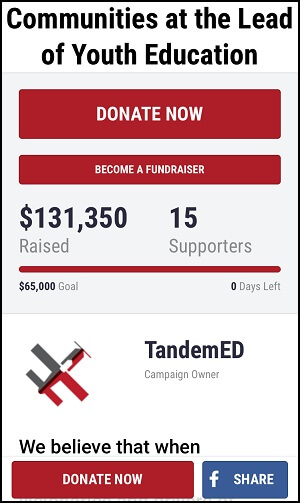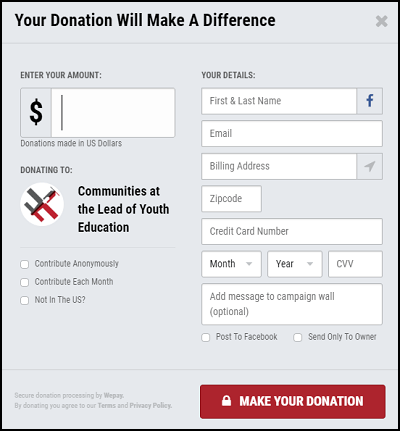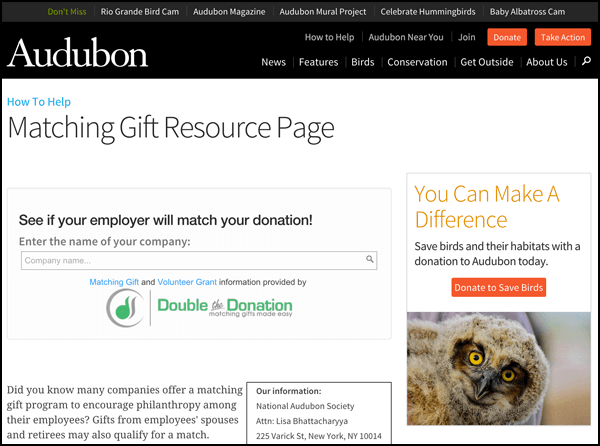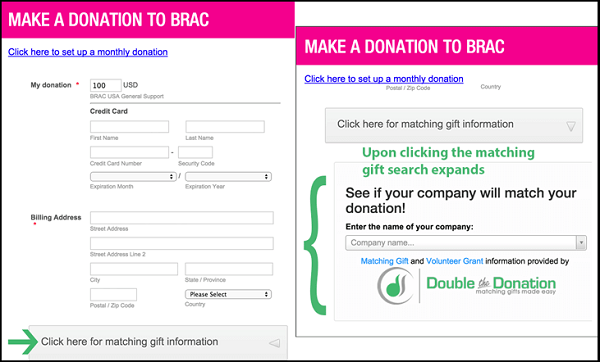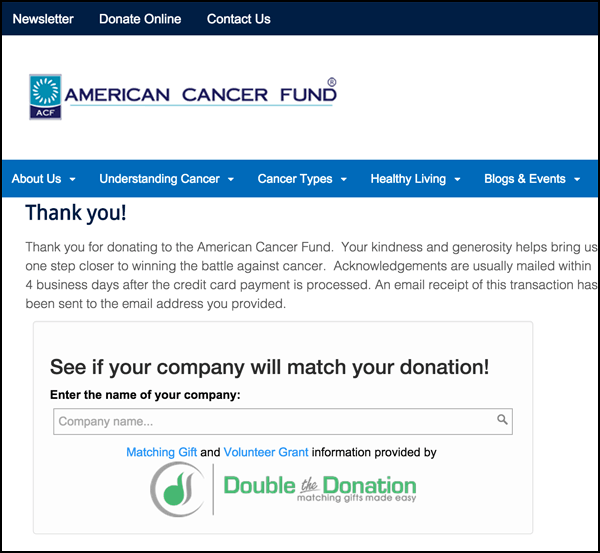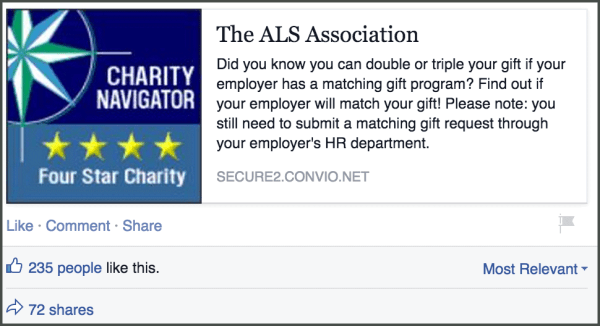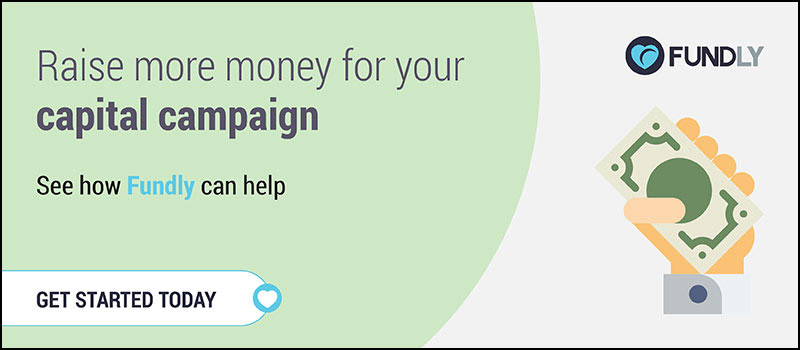6 Ways to Raise Money for Your Capital Campaign
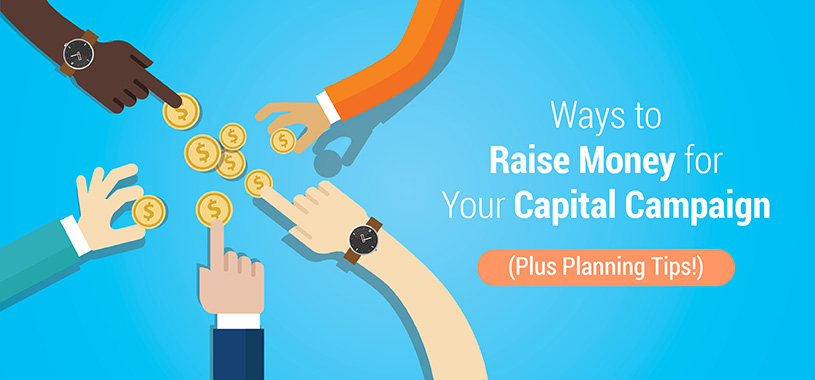

If you’ve launched a fundraiser, then you know just how difficult it can be to raise money without large expenditures. For capital campaigns, this is especially true. To raise significant funds during your capital campaign, you’ll need to be resourceful and open to all kinds of fundraising avenues.
So how do you raise money for your capital campaign?
Your nonprofit can fund your capital campaign through many different outlets, and we have six suggestions for you.
Let’s get into the five ways you can raise money:
- Start a crowdfunding campaign.
- Prepare accordingly to maximize your public phase.
- Optimize your online donation forms.
- Encourage matched giving.
- Ask companies for contributions.
- Apply for challenge grants.
If you’re ready to get started with your capital campaign, read on.
1. Start a crowdfunding campaign.
If you want to raise funds for your capital campaign, then you should consider planning a crowdfunding campaign. Crowdfunding is a type of fundraising that uses social sharing to spread the word about your fundraiser to your supporters and their network of peers.
Here’s how it works:
- Your organization will set a goal and create a page.
- On your page, you’ll post your story with images and videos to encourage donors to give.
- Once your page is ready, you can share it with your supporters.
- Your supporters (and first-time donors) will come to your page and make a contribution.
- After donating, supporters can share your page with their network to encourage their peers to give.
You and your contributors will continue to share your crowdfunding page until you’ve reached your goal or deadline.
One of the most important parts of having a successful crowdfunding campaign is picking a platform. With the right platform, you’ll have all the features you need to run a successful campaign.
If you’re not sure what to look for, you should find a platform that lets you:
- Track results. You can see your campaign’s progress and know how much donors are giving.
- Display your goal. With fundraising thermometers, you can show your supporters how far left you have to go.
- Share your crowdfunding page. You want supporters to have a way to easily share your page.
Of course, there are many other features that make a great crowdfunding platform, but these are the most important ones to look for. Create a list of important capabilities for your nonprofit so that you can prioritize what you want.
Additionally, many platforms are specifically made for different types of fundraising. For instance, there are specific platforms for colleges and universities (USEED), creative projects (Kickstarter), and general fundraising (Fundly).
If you’re not sure what platform is right for you, check out our list of crowdfunding platforms.
Pro Tip: Crowdfunding is a great way to raise money for your capital campaign because it doesn’t cost a lot to run, and you can gain new contributors in the process.

2. Prepare accordingly to maximize your public phase.
Planning a capital campaign requires a lot of steps before you can start asking for donations. You might be wondering where to begin.
Luckily, we’ve got a couple tips to help you plan your capital campaign so that you can get started on the right foot and fundraise, fundraise, fundraise.
A. Talk to a capital campaign consultant.
If you’re not sure where to go with your capital campaign, then you should consider hiring a capital campaign consultant.
A consultant will help you plan out your campaign and create a strategy to help reach your goal. If you’re not familiar with capital campaign consultants, they can help you with:
- Writing and designing your case for support.
- Performing your feasibility study.
- Creating marketing materials for your campaign.
- Training your leadership.
You can hire a consultant to help you with your entire campaign, or you can have them complete a few tasks.
To find a consultant that will fit your needs, you can start by looking at nonprofit consulting associations like the Giving Institute and focus on consultants that specialize in capital campaigns. While resources like this will provide you with long lists of professionals, you can narrow down your search by asking other organizations in your network for references.
Once you’ve narrowed down your list, you can request proposals from your top choices to gain a better understanding of the strategies they think will work best for you nonprofit. These proposals should include specifics like the responsibilities of both the consultant and nonprofit, estimated cost, and desired outcome.
With this information, you can choose the consultant that best meets your needs.
To start your search, consider our two picks for the best capital campaign consultants.
Aly Sterling Philanthropy
Aly Sterling Philanthropy is a full-service consulting firm that provides services related to fundraising, board governance, strategic planning, and executive search. They’re an excellent choice for your capital campaign needs.
Averill Fundraising Solutions
Averill Fundraising Solutions is hyper focused on capital campaign and capacity building services. They take a unique, hands-on approach and have the experience you need to get your campaign from concept to reality.
C. Start researching donors for your feasibility study.
One of the first things that you should complete when you plan for a capital campaign is the feasibility study. The information you gain will help you determine if reaching your campaign goal is possible.
You need to know if you have a large enough donor base to contribute enough to reach your goal. A part of the study includes researching donors to see if they have the capacity to contribute major gifts, as this will be where most of the funds for your campaign come from.
D. Understand the capital campaign timeline.
Capital campaigns are unique from other fundraising efforts because they have distinct phases that dictate when to ask for contributions from certain donors. Let’s look at the five critical stages of a capital campaign:
- The planning phase is when you conduct your feasibility study and write your case for support.
- During the quiet phase, you’ll start soliciting donations from your major gift donors. This is when you’ll raise the majority (50%-70%) of your goal.
- You’ll announce your capital campaign to the general public during the kickoff phase. Typically, this phase includes a formal event, thanking those who have already contributed and informing the press of your project.
- The open phase is when you’ll raise the rest of the funds from your other supporters. To broaden your reach, you can launch other fundraising initiatives like a crowdfunding or peer-to-peer campaign.
- Once you’ve reached your goal, it’s time to thank all of your supporters in the stewardship phase.
Understanding the capital campaign timeline will make it easier for you to plan how you’ll market your campaign during the different phases.
Learn more about the basics of capital campaigns.
Pro Tip: Starting a capital campaign is a lot of work. Don’t start one on your own. Seek out the help of a consultant, research your donors, and understand the campaign timeline to see if now is the right time to launch your campaign.
You can learn more about capital campaigns with this helpful guide.
3. Optimize your online donation forms for your capital campaign.
It’s important to improve your online donation forms so that donors will stay long enough to confirm their donation.
When a form is too long or complicated, donors are likely to abandon the page out of frustration before completing their donation. In fact, 60% of donors abandon their donations for these reasons (source). If your donation process isn’t optimized, you could be missing out on a lot of donations!
In addition to making your forms easier to use, you can add features that encourage donors to give more. With optimized forms, you have the potential to raise even more money for your capital campaign.
Let’s go over how you can optimize your donation forms:
- Make your donation forms mobile-friendly. Mobile giving is a type of online donation that occurs on—you guessed it!—a mobile device, like a smart phone or tablet. While it’s more convenient for donors to give on their mobile devices, the experience of giving is different than using a computer. For that reason, you need to adjust the donation process to fit a mobile screen.
- Keep the donation forms short. Even though it’s tempting to ask donors multiple questions on your donation forms, it can cause some donors not to give. Don’t lose donors by making your forms too long to fill out. Instead, keep your forms to one page. That way, donors can see everything that they need to complete and gauge how long it will take them.
- Use donation amount buttons. Donation buttons provide donors with preset donation amounts that they can choose from. It makes the giving process faster because donors don’t have to enter an amount. Plus, having suggested amounts encourages donors to give more. They will think everyone is using the buttons and feel like the amounts are good size gifts to donate.
- Brand your online donation forms. Branding your online donations forms is a great way to establish trust, which can lead to more donations. After all, donors will be much more comfortable giving if they’re confident that the donation form belongs to your nonprofit.
All of these features are crucial if you want to raise money for your capital campaign, so don’t settle on a donation tool that isn’t tailored toward nonprofits.
Similarly, with optimized donation forms, you should frequently link back to these pages throughout your online marketing materials.
Check out these ways you can incorporate your optimized online donation forms throughout your capital campaign’s marketing strategy:
- Share your forms on social media. Since your donation forms are now mobile-optimized, be sure to promote and share your forms on your social media platforms since the majority of mobile users will interact with your nonprofit through these social channels.
- Link to your donation forms in your capital campaign’s brochure. If your marketing team created a brochure for your capital campaign, direct readers to your donation form in a QR code on the print version and in hyperlinks in the downloadable online version.
- Incorporate mobile giving into fundraising events. Mobile giving isn’t just for online supporters. Your nonprofit can encourage attendees of your on-site fundraising events to use mobile donation forms at events. This allows supporters who prefer giving with their credit card a quick way to donate without cash.
By optimizing the way you incorporate mobile donations into your fundraising strategy, your capital campaign can benefit even more from your newly streamlined online giving forms!
Pro Tip: Optimizing donations can help make sure that donors have an easy way to donate to your capital campaign during the open phase.
4. Encourage matched giving during your capital campaign.
Many companies have matching gift programs where they will match their employees’ donations to a nonprofit. As long as the employee submits the right paperwork before the deadline, and the nonprofit meets all the requirements, the company will send a donation of the same size.
Typically, companies match gifts 1 for 1, but some companies match at an even higher ratio!
Since donors can double their donations without having to open their wallets for the second time, they’re likely to pursue matching gifts as long as they’re aware of the option.
The truth is that many donors don’t know about their company’s matching gift program, and if they do know, donors don’t know how to submit a request. It’s your nonprofit’s responsibility to educate donors about matching gifts.
So how do you promote matching gifts?
You can do this by reminding them about matched giving throughout the donation process and making it easy for donors to find information on their company’s program.
If you’re not sure how to promote matched giving, you can:
The great thing about matching gift programs is once you educate donors on the process, they’ll likely submit a request every time they contribute.
Pro Tip: Your nonprofit can promote matching gifts before and during your capital campaign to double the funds you raise.
5. Ask companies for contributions to your capital campaign.
Individuals aren’t the only ones you can ask for donations. Have you thought about asking businesses to support your capital campaign?
Many companies support fundraisers like capital campaigns because it shows their philanthropic side. In fact, many large corporations offer grants that can help fund your campaign.
Seeking contributions from companies can also help you develop meaningful partnerships with businesses.
In addition to monetary donations, companies can offer your capital campaign in-kind donations. Since most campaigns require resources to plan, companies can donate technology, supplies, and other items to help with your campaign.
If you’re interested in asking companies for contributions (and you should be!), then do some research first. Figure out what types of philanthropic programs are available.
Typically, companies have guidelines on what kind of organizations they support; you want to be aware of these guidelines before you ask.
Pro Tip: While the majority of your donations may come from individuals, you can still ask companies for contributions.
6. Apply for challenge grants during your capital campaign.
As you raise funds for your capital campaign, you should apply for a challenge grant. Specific grant making institutions give funds to organizations who raise a certain amount of money.
Since you’ll be raising funds for your capital campaign, you can receive even more money if you complete a challenge grant! Plus, applying to grants doesn’t require a lot of money, so more of the funds can go towards your campaign.
Each challenge grant that you apply for will be slightly different. Therefore, it’s important to understand what the requirements are before you apply. Most challenge grants have guidelines regarding the:
- Time frame: The deadline for when you need to reach the goal will vary depending on the grant. For example, you might have a year to raise the funds or just a few months.
- Type of nonprofit: Some grants are for specific types of nonprofits. Do your research to see if your nonprofit qualifies for the grant you’re applying to.
- Kind of donation: For some grants, not every gift will qualify as a donation that can go towards the challenge. For instance, the funds you raise when a donor registers for an event might not be considered a “donation,” while gifts made on your online donation form will count.
Start researching the different foundations, institutions, and corporations that offer challenge grants. When you know more about the challenge that you’re applying for, you can increase the chances of successfully reaching your goal.
A challenge grant is a great way to raise money for your capital campaign because you don’t have to do anything extra to earn the funds. All you have to do is just continue your other fundraising efforts to raise enough to meet the challenge.
Pro Tip: Applying for a challenge grant is a great way to raise funds because you can continue raising funds like you normally would. Just remember to know all the guidelines before you apply.
Hopefully, these fundraising ideas have inspired you to try new ways to raise money for your capital campaign. Good luck fundraising!
For more information about planning for a capital campaign, check out this step-by-step guide.
To learn more about how you can raise money for your capital campaign, check out these additional resources:
- Crowdfunding 101: If you still need a little more information about how crowdfunding works — and about how it can help you raise money for your capital campaign — check out this guide. It will give you all the background information you’ll need to start off on the right foot!
- Crowdfunding Tips: Quick and Easy Ways to Raise More Money: Help your crowdfunding campaign go from ordinary to extraordinary with this list of handy tips. Your capital campaign fundraising efforts will reap the benefits!
- Averill Fundraising Solutions: Write a Capital Campaign Case Statement. One way to ensure your capital campaign raises as much money as possible? Work with a fundraising consultant to develop an air-tight case statement. Visit Averill Fundraising Solutions to learn more about getting your case statement right!
- 127 Amazingly Easy (And Profitable!) Fundraising Ideas: Ready to start fundraising for your capital campaign? Check out our comprehensive list of the best fundraising ideas for all types of charitable causes. You’ll be on your way to starting a successful fundraiser in no time!


